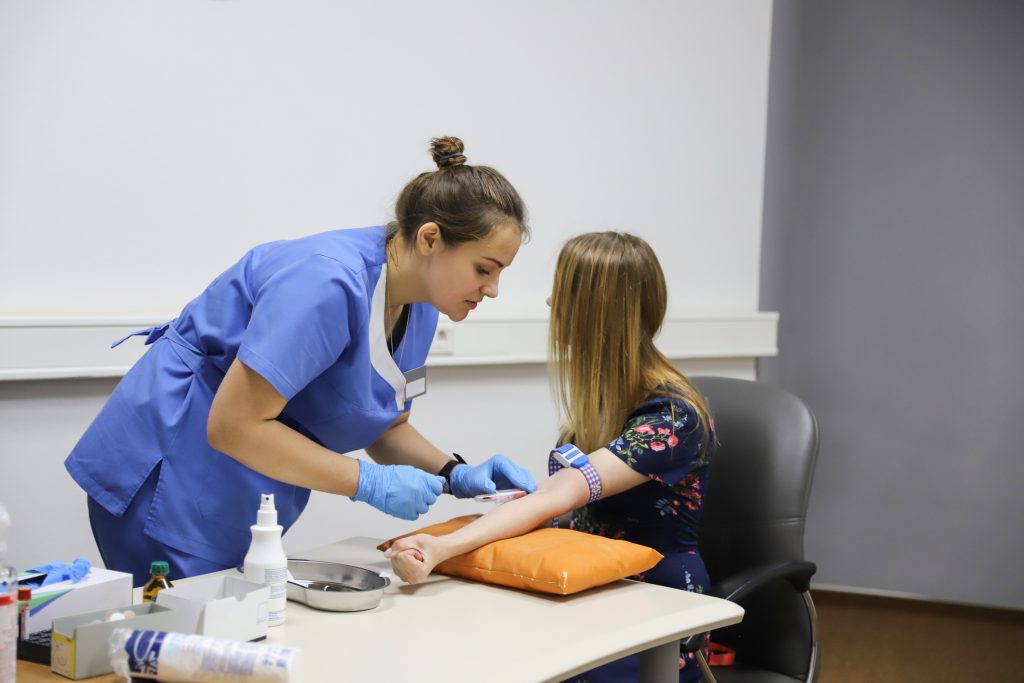The Only Guide to Northeast Medical Institute - New Haven Campus Phlebotomy Course & Cna Class
Wiki Article
Northeast Medical Institute - New Haven Campus Phlebotomy Course & Cna Class Things To Know Before You Get This
Table of ContentsGetting My Northeast Medical Institute - New Haven Campus Phlebotomy Course & Cna Class To WorkTop Guidelines Of Northeast Medical Institute - New Haven Campus Phlebotomy Course & Cna ClassGetting My Northeast Medical Institute - New Haven Campus Phlebotomy Course & Cna Class To WorkThe Ultimate Guide To Northeast Medical Institute - New Haven Campus Phlebotomy Course & Cna ClassNot known Facts About Northeast Medical Institute - New Haven Campus Phlebotomy Course & Cna ClassNortheast Medical Institute - New Haven Campus Phlebotomy Course & Cna Class Things To Know Before You Buy
The use of such gadgets need to be gone along with by various other infection avoidance and control practices, and training in their usage.For settings with low sources, price is a motoring element in purchase of safety-engineered gadgets. Where safety-engineered tools are not readily available, experienced usage of a needle and syringe is acceptable.
One of the essential markers of quality of treatment in phlebotomy is the participation and participation of the individual; this is mutually useful to both the health worker and the individual. Clear info either composed or spoken need to be available to every patient that undergoes phlebotomy. Annex F supplies sample message for describing the blood-sampling treatment to a client. In the blood-sampling space for an outpatient department or clinic, give a comfy reclining sofa with an arm remainder.
About Northeast Medical Institute - New Haven Campus Phlebotomy Course & Cna Class
Guarantee that the signs for blood sampling are clearly specified, either in a created protocol or in documented directions (e.g. in a research laboratory type). Whatsoever times, adhere to the strategies for infection prevention and control provided in Table 2.2. Infection prevention and control practices. Collect all the equipment required for the treatment and location it within safe and easy reach on a tray or cart, ensuring that all the things are clearly visible.Where the individual is adult and conscious, follow the actions detailed listed below. Introduce yourself to the patient, and ask the person to specify their full name. Inspect that the lab kind matches the patient's identification (i.e. match the person's details with the lab kind, to guarantee accurate identification). Ask whether the license has allergic reactions, fears or has actually ever passed out during previous injections or blood draws.
Make the person comfortable in a supine setting (if feasible). The individual has a right to decline a test at any time prior to the blood sampling, so it is vital to guarantee that the client has recognized the procedure - PCT Training.
Some Ideas on Northeast Medical Institute - New Haven Campus Phlebotomy Course & Cna Class You Need To Know
Prolong the individual's arm and examine the antecubital fossa or forearm. Situate a capillary of an excellent dimension that shows up, straight and clear. The diagram in Area 2.3, shows typical placements of the vessels, but many variations are possible. The average cubital blood vessel exists in between muscular tissues and is generally the most easy to pierce.DO NOT place the needle where veins are drawing away, due to the fact that this increases the possibility of a haematoma. Locating the capillary will certainly help in determining the appropriate dimension of needle.
Haemolysis, contamination and visibility of intravenous liquid and medication can all alter the results (39. Nursing team and medical professionals might access central venous lines for specimens following protocols. Specimens from main lines bring a threat of contamination or incorrect laboratory test outcomes. It serves, however not perfect, to draw blood samplings when first presenting an in-dwelling venous device, before linking the cannula to the intravenous fluids.
The 20-Second Trick For Northeast Medical Institute - New Haven Campus Phlebotomy Course & Cna Class
Failing to enable enough call time enhances the danger of contamination. DO NOT touch the cleaned up site; in certain, DO NOT put a finger over the blood vessel to assist the shaft of the exposed needle.Ask the client to form a clenched fist so the blood vessels are much more popular. Get in the vein quickly at a 30 degree angle or much less, and continue to introduce the needle along the vein at the simplest angle of access - CNA Classes. As soon as enough blood has been accumulated, release the tourniquet prior to taking out the needle
Facts About Northeast Medical Institute - New Haven Campus Phlebotomy Course & Cna Class Revealed
Take out the needle carefully and apply gentle stress to the website with a clean gauze or dry cotton-wool sphere. Ask the client to hold the gauze or cotton wool in location, with the arm expanded and elevated. Ask the client NOT to bend the arm, due to the fact that doing so triggers a haematoma.
6 Easy Facts About Northeast Medical Institute - New Haven Campus Phlebotomy Course & Cna Class Described
Where feasible, keep the tubes in a rack and move the shelf in the direction of you - https://northeastmed.carrd.co. If the sample tube does not have a rubber stopper, inject extremely gradually right into the tube as minimizing the pressure and velocity utilized to transfer the specimen lowers the danger of haemolysis.
Report this wiki page